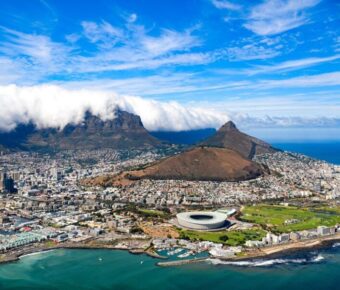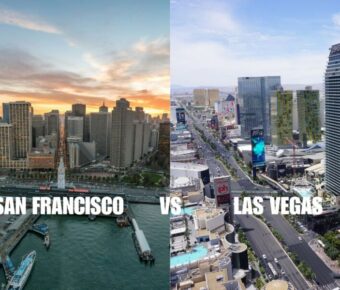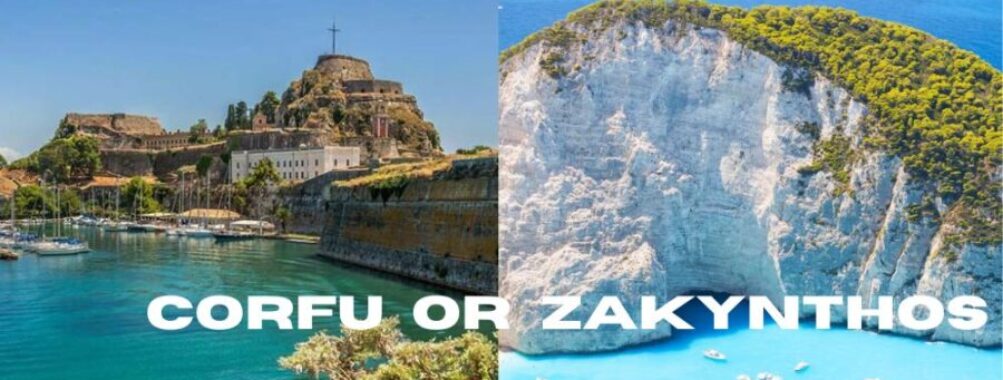
Corfu vs Zakynthos: Which Greek Paradise Offers the Better Island Experience in 2025
Nestled in the stunning Ionian Sea, Corfu and Zakynthos are two Greek island gems that captivate travelers in different ways. Corfu appeals more to history buffs and culture lovers with its Venetian fortresses and rich heritage, while Zakynthos draws beach enthusiasts and party-seekers with its vibrant nightlife and famous Shipwreck Beach.
The islands offer distinct vacation experiences despite their shared Mediterranean charm. Corfu boasts more accommodation options and cultural sites, making it perfect for longer stays and deeper exploration. Zakynthos shines with its crystal-clear waters, sea caves, and chances to spot loggerhead turtles.
Weather plays nicely on both islands, with warm summers perfect for swimming and mild winters ideal for sightseeing. Both destinations serve up amazing Greek food and local wines, though each island puts its own spin on traditional dishes.
Contents
- Geography and Accessibility
- Location in the Ionian Sea
- Travel Options to and from the Mainland
- Cultural Significance
- Historical Sites
- Cultural Heritage
- Accommodation and Stay
- Hotels and Resorts
- Luxury Villas and Traditional Tavernas
- Beach Experiences
- Sandy vs Pebbly Beaches
- Famous Beaches and Hidden Gems
- Outdoor Activities
- Water Sports and Adventure
- Hiking and Walking Trails
- Nightlife and Entertainment
- Bars and Clubs
- Lively vs Quiet Evening Options
- Local Cuisine and Dining
- Traditional Greek Cuisine
- Seafood and Specialty Dishes
- Flora and Fauna
- Wildlife Watching
- Endemic Species and Conservation
- Traveler Experiences
- Family vs Solo Travel
- Honeymoon and Romantic Getaways
- Shopping and Souvenirs
- Local Shops and Markets
- Handcrafted Products
- Transportation within the Islands
- Rental Options and Public Transport
- Scooter and Bicycle Use
- Frequently Asked Questions
- What are the key differences in attractions between Corfu and Zakynthos for travelers?
- Which island offers a better experience for tourists seeking nightlife, Corfu or Zakynthos?
- How do the beaches of Corfu compare to those of Zakynthos in terms of beauty and facilities?
- Can you highlight the unique cultural experiences that differentiate Corfu from Zakynthos?
- What are the transportation options available when travelling from Corfu to Zakynthos?
- In terms of overall costs, how does vacationing in Corfu differ from Zakynthos?
- More Travel Guides
Geography and Accessibility
Both Corfu and Zakynthos sit in strategic spots in the Ionian Sea, each offering different travel advantages based on their location and size. Corfu stretches across 593 km² while Zakynthos covers 406 km².
Location in the Ionian Sea
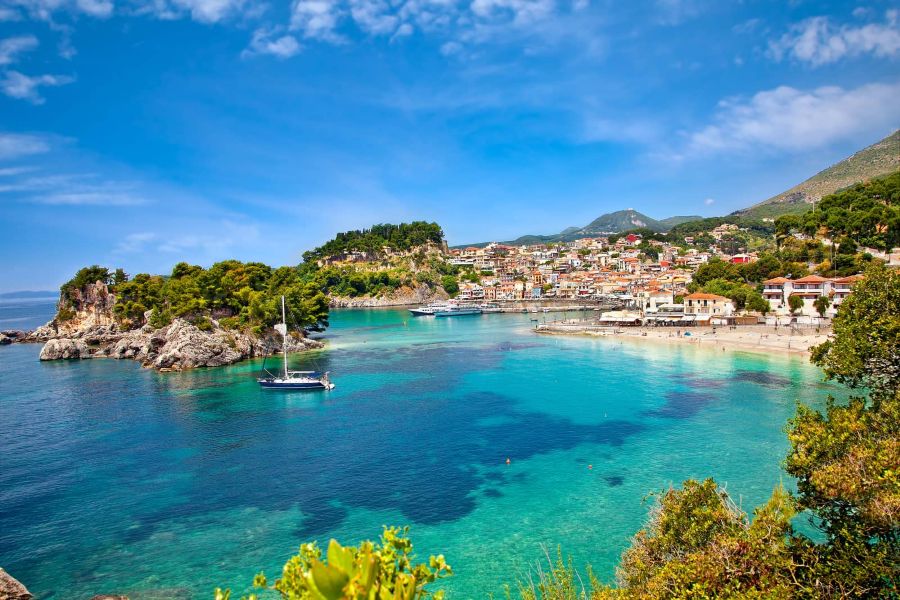
Corfu lies at the northernmost point of the Ionian Islands, nestled close to the Greek and Albanian mainland. Its position makes it a natural gateway between Greece and Italy.
The island sits between its smaller neighbor Paxos to the south and the Greek mainland to the east. Its unique location has shaped its rich trading history and cultural mix.
Zakynthos rests further south, positioned 13 km below Kefalonia. At 35 km long and 20 km wide, it forms the southernmost major island of the Ionian group.
The waters around both islands shine in stunning blue shades. Zakynthos enjoys a more sheltered position, protected by Kefalonia to its north.
Travel Options to and from the Mainland

Search flights to Greece from major European cities throughout the year. Both islands run regular ferry services to mainland ports.
Corfu’s close position to mainland Greece means shorter ferry rides from ports like Igoumenitsa. The island’s international airport handles many direct European flights.
Zakynthos also boasts its own airport with good connections. Ferry services link the island to mainland ports, though journeys take longer than to Corfu.
Both islands maintain daily boat services to neighboring Ionian islands during peak season, making island hopping between Kefalonia, Lefkada, and other spots simple.
Cultural Significance
Both Corfu and Zakynthos hold deep cultural roots that span thousands of years, with distinct architectural styles and historical landmarks that showcase their unique Greek and Venetian influences.
Historical Sites
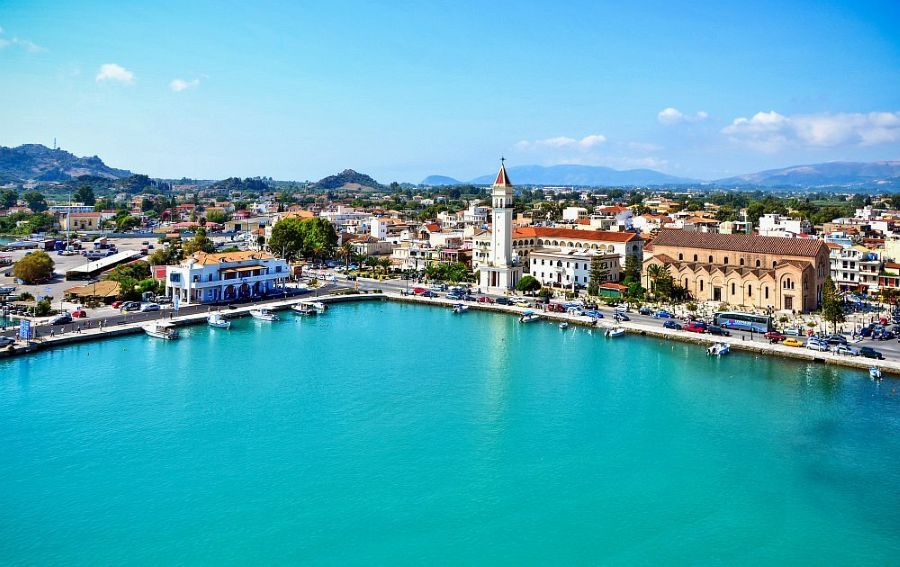
Corfu Town stands as a UNESCO World Heritage Site, featuring stunning Venetian fortresses and elegant French-style buildings. The Achilleion palace, built by Empress Elisabeth of Austria in 1890, displays beautiful Greek mythology-inspired artwork and gardens. The medieval fortress of Angelokastro sits perched on a cliff, offering a glimpse into the island’s defensive past.
Zakynthos Town was rebuilt after a devastating 1953 earthquake. The rebuilt Venetian-style buildings keep the traditional architectural style alive. You’ll spot beautiful churches like Saint Nicholas of the Mole and the Byzantine Museum, which houses precious religious artifacts and icons.
Cultural Heritage
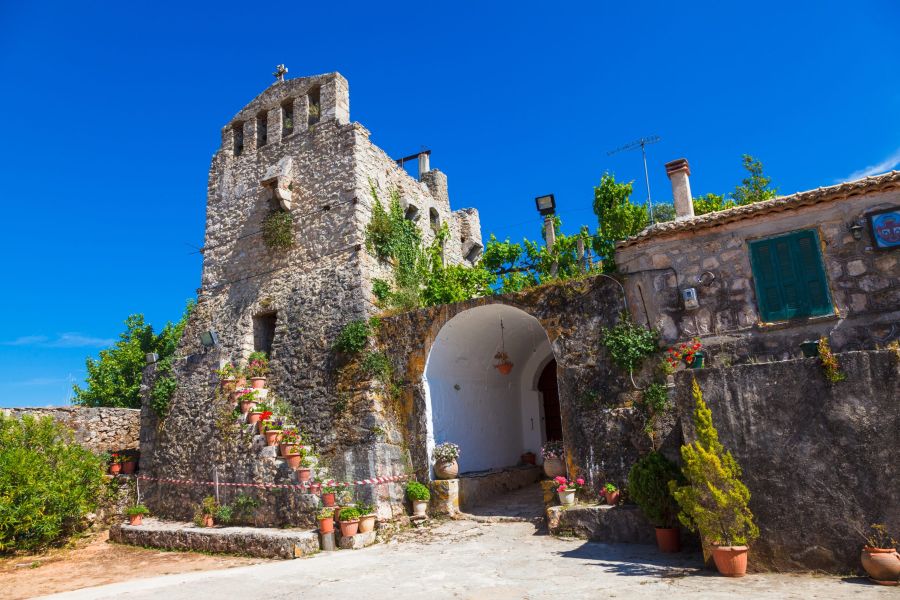
Corfu’s cultural blend comes from years of Italian, French, and British rule. The island celebrates unique Easter traditions with pot-throwing ceremonies and brass band parades. Local crafts include kumquat liqueur making and traditional lace work.
Zakynthos preserves its musical heritage through kantades – local serenades sung in the streets. The Anafonitria Monastery, dating back to the 15th century, remains an important religious site. Local artists still practice traditional crafts like pottery and weaving.
The island’s folk museums display traditional costumes, tools, and household items that tell stories of past generations. Many villages host cultural festivals throughout summer, sharing traditional Greek dances and music with visitors.
Accommodation and Stay
Both islands offer diverse lodging choices that fit different budgets and vacation styles. Each destination has its own special mix of places to stay, from beachfront rooms to quiet inland spots.
Hotels and Resorts
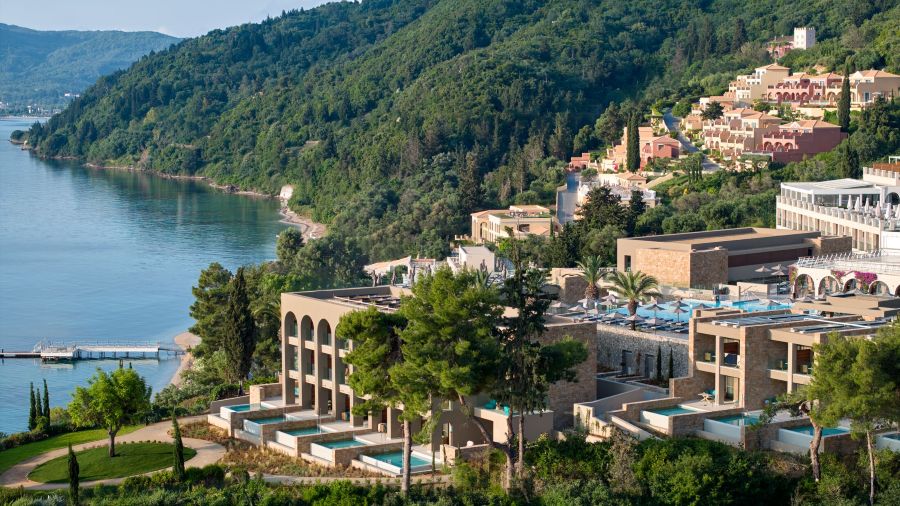
Corfu has more accommodation options due to its larger size. The island features many beachfront resorts along its eastern coast, with prices ranging from €80 to €400 per night.
The northern area of Corfu has the most upscale hotels, especially around Paleokastritsa and Kassiopi. These spots often include private beaches and sea-view pools.
Zakynthos focuses its hotel scene around Laganas Bay and Tsilivi. The hotels tend to be newer and more modern than those in Corfu. Many offer all-inclusive packages perfect for families.
Room rates in Zakynthos usually run slightly lower than Corfu during peak season. Most beach hotels cost between €60-300 per night.
Luxury Villas and Traditional Tavernas

Corfu leads in authentic stays, with many restored stone houses turned into boutique inns. The island’s old tavernas often include rooms above their restaurants, giving guests a true Greek experience.
Stone villas dot the Corfu countryside, especially in the northeast region. These properties often come with private pools and stunning sea views.
Zakynthos has fewer traditional stays but makes up for it with modern luxury villas. The west coast area of Keri offers stunning cliff-top properties.
Family-run tavernas with rooms are common in Zakynthos’s smaller villages like Keri and Vasilikos. These provide simple but clean rooms at budget-friendly rates.
Beach Experiences
Both islands offer distinct coastal experiences with crystal-clear waters of the Ionian Sea. Each destination features unique beach types and famous spots that draw visitors from around the world.
Sandy vs Pebbly Beaches
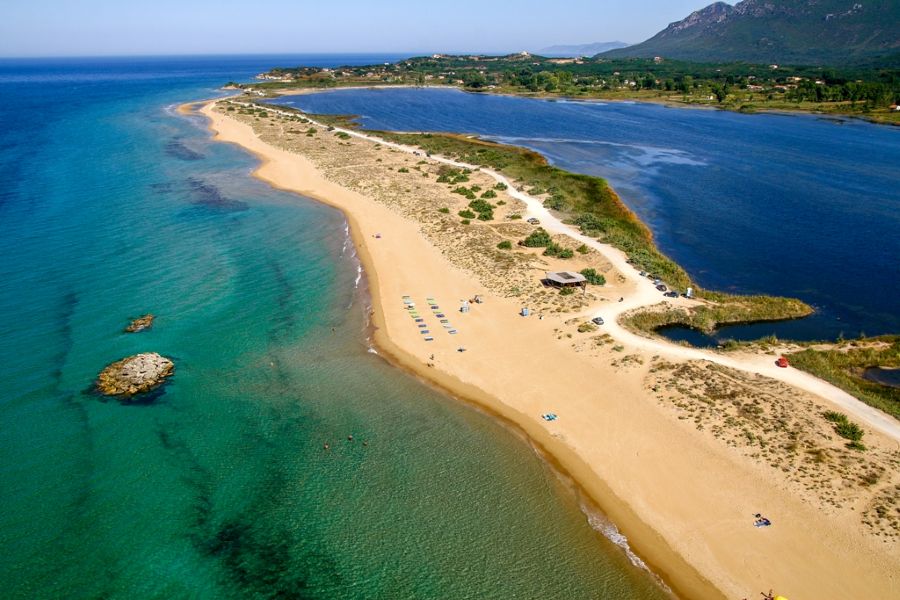
Zakynthos boasts more sandy beaches, making it ideal for families and sunbathers. The southern coast of the island has soft golden sand that slopes gently into turquoise waters.
Corfu’s beaches mix sandy and pebbly shores. The west coast features long stretches of sand at Halikounas, perfect for wind sports and swimming. The east coast tends to have more pebbles.
Many of Corfu’s pebbly beaches, like those in Paleokastritsa, offer incredibly clear water – perfect for snorkeling. The stones keep the water clearer than sandy beaches.
Famous Beaches and Hidden Gems
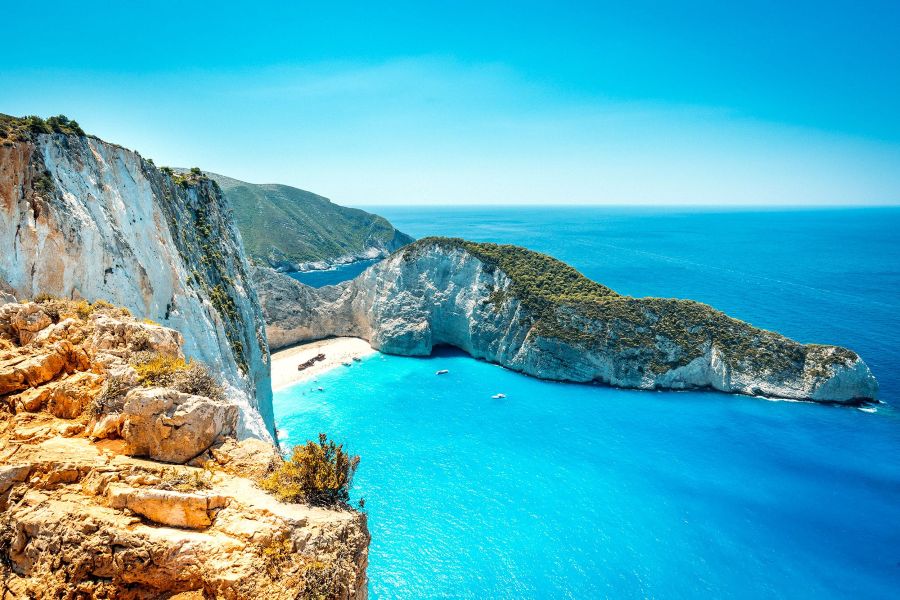
Navagio Beach (Shipwreck Beach) stands as Zakynthos’s crown jewel. This stunning cove, only accessible by boat, features a rusted shipwreck on pure white sand surrounded by towering limestone cliffs.
Gerakas Beach in Zakynthos serves as a protected nesting site for loggerhead turtles. Visitors can swim in shallow waters while respecting the natural habitat.
Paleokastritsa in Corfu offers six small coves with emerald waters. Hidden beaches dot the coastline between larger beaches – rent a boat to find secluded spots away from crowds.
Several beaches in both islands have earned Blue Flag status for their cleanliness and facilities. Tip: Visit famous beaches early morning or late afternoon to avoid peak crowds.
Outdoor Activities
Both islands offer stunning natural settings for outdoor adventures, from crystal-clear waters perfect for water sports to rugged landscapes ideal for hiking enthusiasts.
Water Sports and Adventure
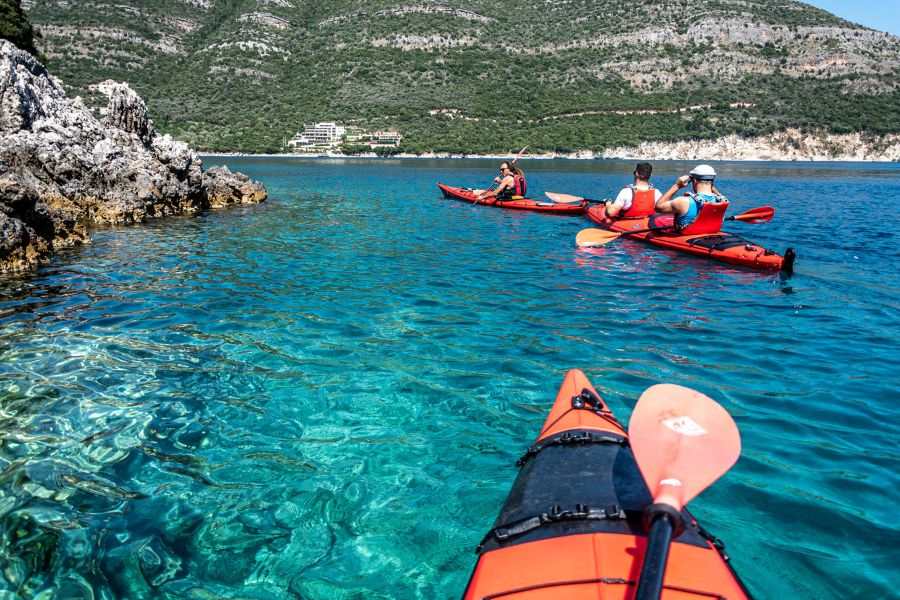
The warm Ionian waters around Corfu and Zakynthos create perfect conditions for water activities. Zakynthos stands out with its famous Blue Caves, where visitors can swim and snorkel in luminescent waters that glow with stunning blue hues.
Corfu’s east coast provides excellent windsurfing spots due to steady afternoon winds. The calmer western shores are perfect for paddleboarding and kayaking.
Both islands have numerous diving centers that offer lessons and guided trips. Snorkelers can spot colorful fish, sea turtles, and vibrant marine life in the shallow coastal waters.
Hiking and Walking Trails
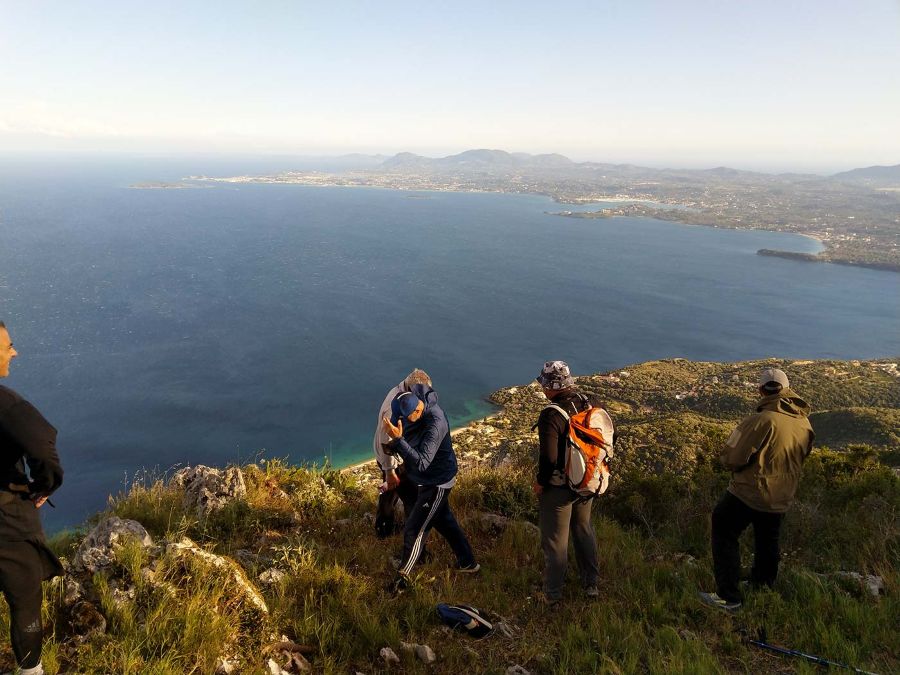
Corfu’s diverse landscape makes it a hiker’s paradise. The Corfu Trail stretches 220 kilometers across the island, taking trekkers through olive groves, pristine beaches, and traditional villages.
Mount Pantokrator, Corfu’s highest peak, offers marked trails with breathtaking views of Albania and Italy on clear days. The paths wind through cypress forests and past ancient monasteries.
Zakynthos features scenic coastal paths along its cliffs. These trails provide amazing views of the limestone formations and turquoise waters below.
Spring and fall bring mild temperatures, making them the best seasons for hiking on both islands. Wild herbs and flowers dot the paths, adding lovely scents to the walking experience.
Nightlife and Entertainment
Both Corfu and Zakynthos offer distinct after-dark experiences, from wild beach parties to relaxed sunset drinks. Each island caters to different types of evening entertainment seekers.
Bars and Clubs
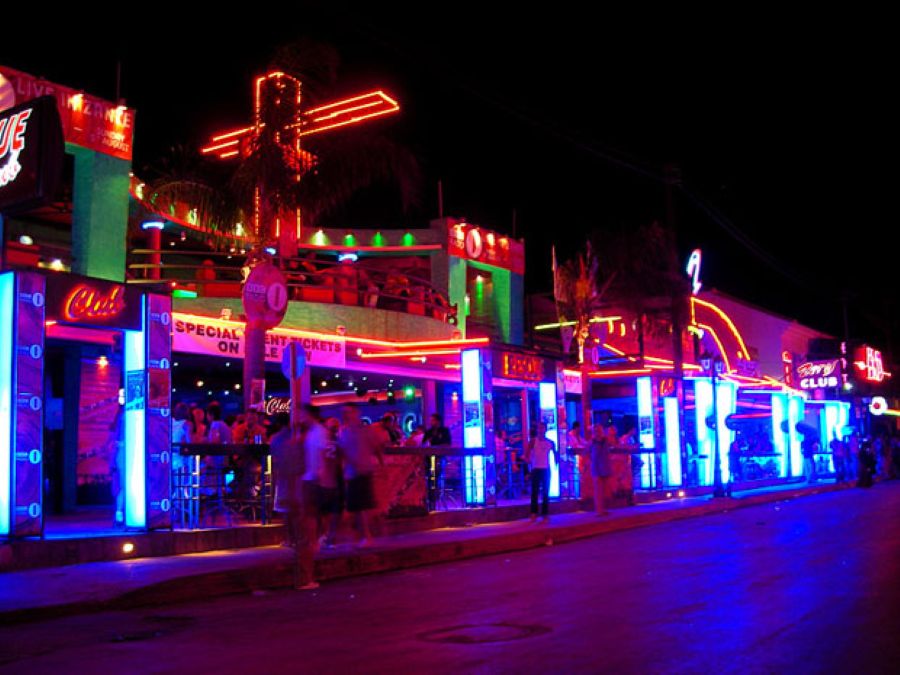
Zakynthos’s Laganas strip buzzes with energy from sunset till sunrise. The area packs dozens of bars and nightclubs into a small space, making it perfect for club-hopping. DJs pump out dance music while bartenders mix cocktails for the young crowd.
Corfu Town’s nightlife feels more sophisticated. Its narrow streets hide cozy wine bars and modern clubs playing a mix of Greek and international music. The Old Town’s historic buildings house some of the most charming spots.
Lively vs Quiet Evening Options
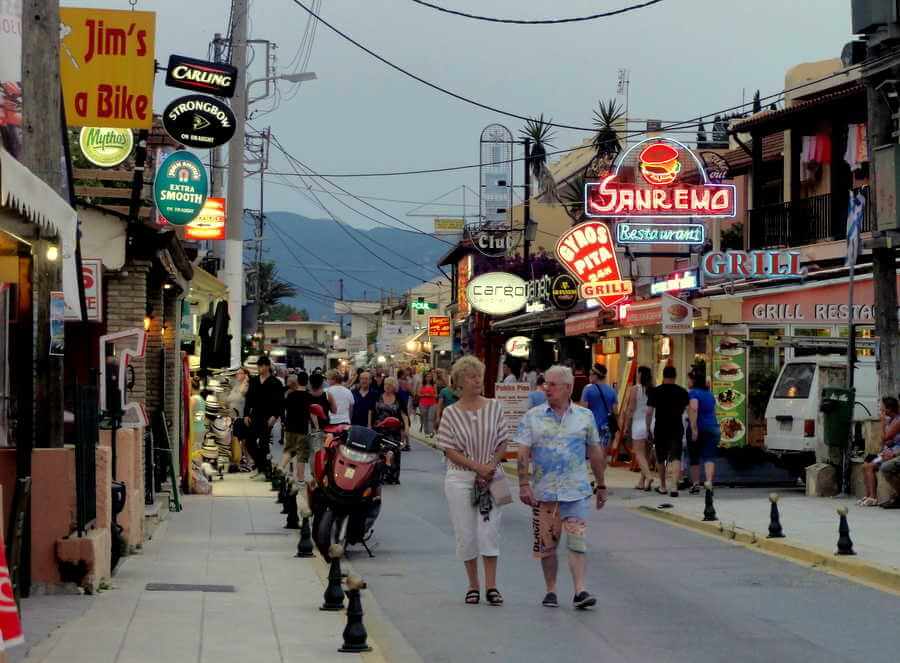
Zakynthos draws party-seekers to its beach clubs and foam parties. The music stays loud, and the drinks flow freely. Many venues keep the fun going until 6 AM, especially in peak season.
Corfu offers more laid-back choices. Families and couples can enjoy quiet dinners at seaside tavernas. Many visitors prefer sipping ouzo while watching the sun set over the Ionian Sea.
Some areas in Corfu, like Sidari, strike a nice balance. You’ll find enough bars to keep things interesting without the overwhelming party scene of Zante’s main strips.
The beachfront bars in both islands serve up stunning views with your drinks. Corfu’s spots tend to wind down earlier, while Zante’s keep the energy high all night.
Local Cuisine and Dining
Both islands offer mouthwatering Greek dishes served in charming tavernas, with fresh seafood and local specialties that reflect their unique Ionian heritage.
Traditional Greek Cuisine
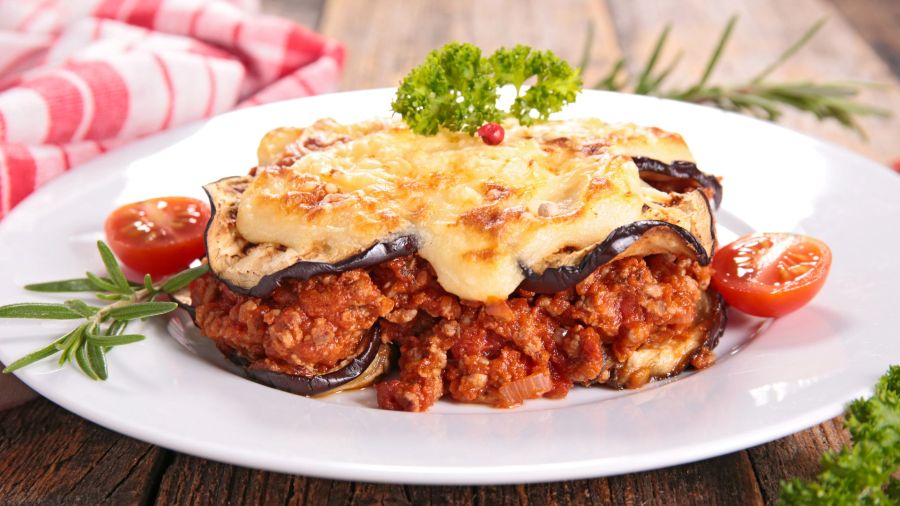
The tavernas in Corfu and Zakynthos serve classic Greek dishes with local twists. Both islands take pride in their moussaka, souvlaki, and fresh Greek salads topped with local olive oil.
Corfu’s signature dish is pastitsada, a hearty pasta dish with rooster or beef in a spiced tomato sauce. The island also makes amazing sofrito – thin slices of veal cooked with garlic and white wine.
Zakynthos specializes in ladotyri, a local cheese aged in olive oil. Their stifado – a rich beef stew with pearl onions – is a must-try dish.
Seafood and Specialty Dishes
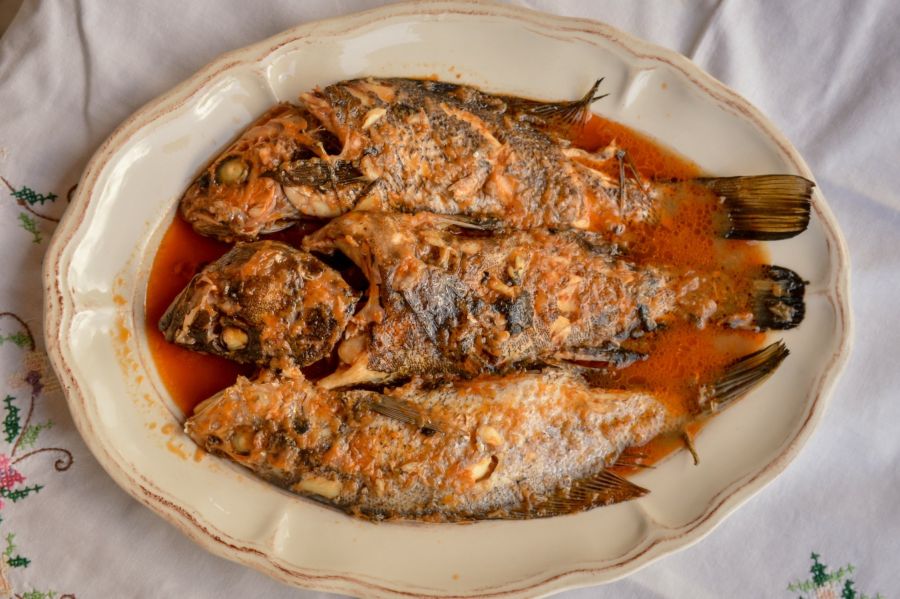
Fresh seafood dominates menus across both islands. Grilled octopus, calamari, and fresh fish are staples at beachside tavernas.
Corfu’s bourdeto stands out – a spicy fish stew made with scorpion fish and red pepper. The island’s bianco fish dish cooked in lemon and garlic sauce draws seafood lovers.
Zakynthos shines with its grilled sea bream and kakavia – a fisherman’s soup made with the day’s catch. Many tavernas serve these with ouzo or local wines.
Flora and Fauna
Both Corfu and Zakynthos boast incredible biodiversity, with each island offering unique opportunities to spot rare species in their natural habitats. The Ionian waters and lush landscapes create perfect environments for diverse wildlife.
Wildlife Watching

Laganas Bay’s golden beaches in Zakynthos are famous for nesting loggerhead sea turtles. You can spot these majestic creatures between May and August. The island’s National Marine Park protects these endangered animals and their nesting sites.
Corfu’s dense olive groves attract numerous bird species, making it a paradise for bird watchers. Eagles, falcons, and rare warblers soar through the skies above the island’s green hills.
Both islands offer excellent snorkeling spots. There, you can swim alongside colorful fish, octopi, and seahorses. The clear waters make marine life easy to spot.
Endemic Species and Conservation
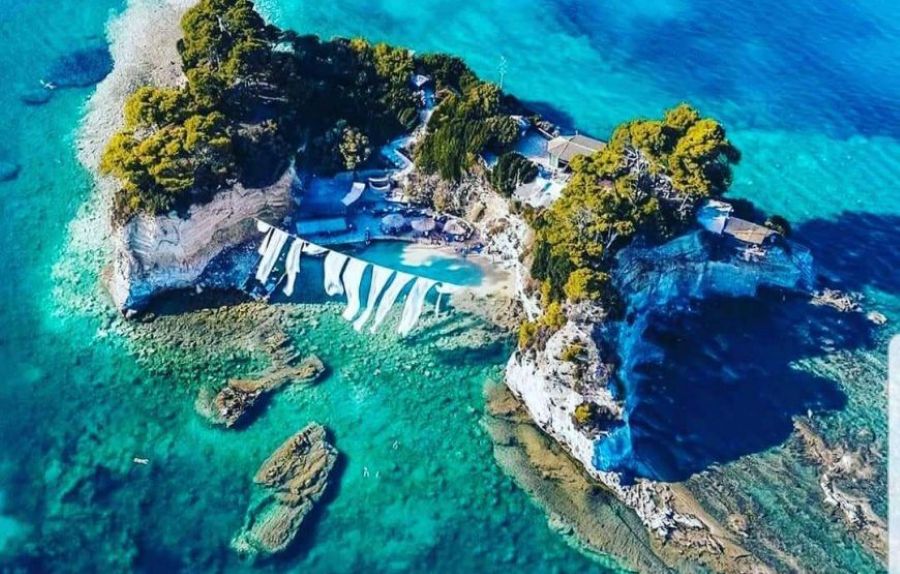
Zakynthos’s protected status has helped preserve its unique wildlife. The National Marine Park of Zakynthos plays a vital role in protecting the loggerhead turtles and their breeding grounds.
Corfu’s rich vegetation supports several endemic plant species found nowhere else in Greece. The island’s cypress trees and wild orchids create essential habitats for local wildlife.
Both islands maintain strict conservation areas. Plaka Forest in Zakynthos serves as a sanctuary for small mammals and reptiles. Meanwhile, Corfu’s wetlands provide critical stopping points for migrating birds.
The crystal-clear waters around both islands support thriving populations of dolphins and monk seals.
Traveler Experiences
Both Corfu and Zakynthos offer unique travel experiences suited to different types of visitors, from families seeking fun activities to couples wanting romantic moments.
Family vs Solo Travel
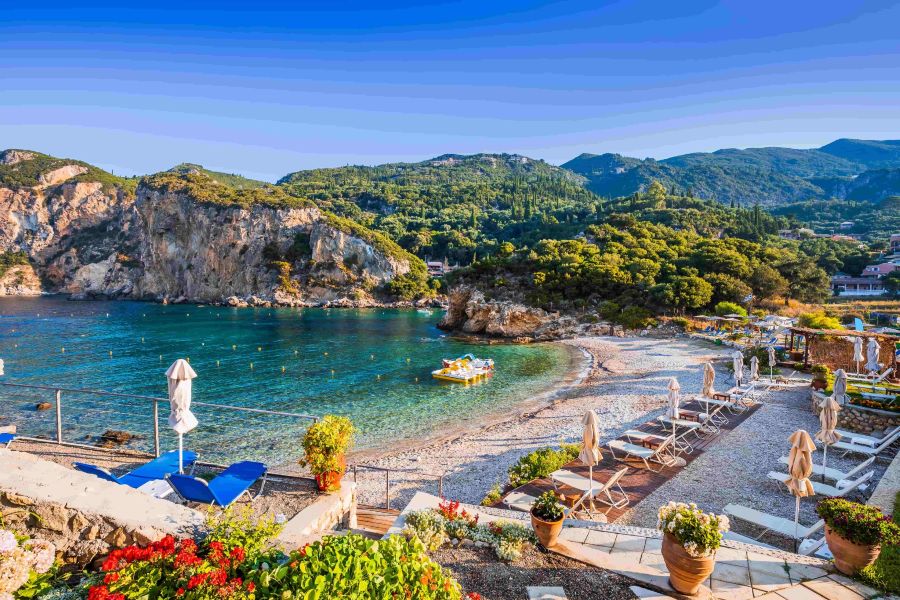
Corfu shines for family trips with its many kid-friendly beaches and water parks. The island’s calm waters at Paleokastritsa and Sidari make swimming safe for little ones. Many resorts offer kids’ clubs and family activities.
Solo travelers often pick Zakynthos for its social atmosphere and easy-to-navigate size. The island’s hostels and beach bars create perfect spots to meet other travelers. Getting around is simple with local buses and rental scooters.
Beach towns like Laganas in Zakynthos buzz with activity, while Corfu’s Dassia and Ipsos balance quiet moments with fun sightseeing tours and water sports.
Honeymoon and Romantic Getaways
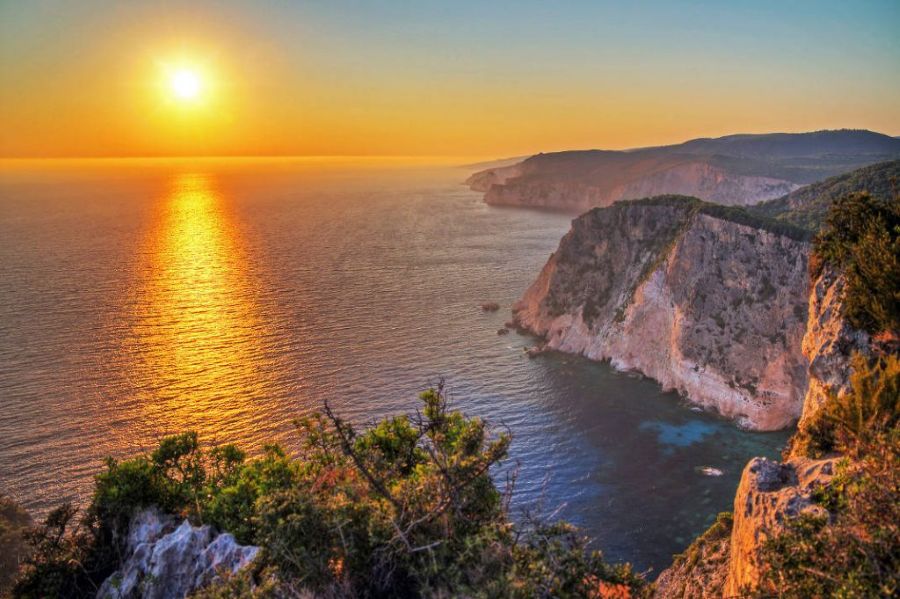
Zakynthos captures hearts with its famous Shipwreck Beach and Blue Caves. Couples can book private boat trips to watch the sunset near Keri Caves. Many small hotels offer intimate settings with stunning sea views.
Corfu’s Old Town brings romance with its narrow cobblestone streets and candlelit tavernas. Couples love walking through Liston’s elegant arcade at dusk. The palace gardens provide peaceful spots for afternoon strolls.
Both islands feature secluded beaches perfect for couples. Zakynthos has Porto Limnionas, while Corfu offers Rovinia Beach. Boutique hotels in both places specialize in honeymoon packages with private pools and spa services.
Shopping and Souvenirs
Both Corfu and Zakynthos provide excellent shopping experiences that range from bustling markets to charming boutiques, with plenty of authentic Greek products and handmade items to take home.
Local Shops and Markets
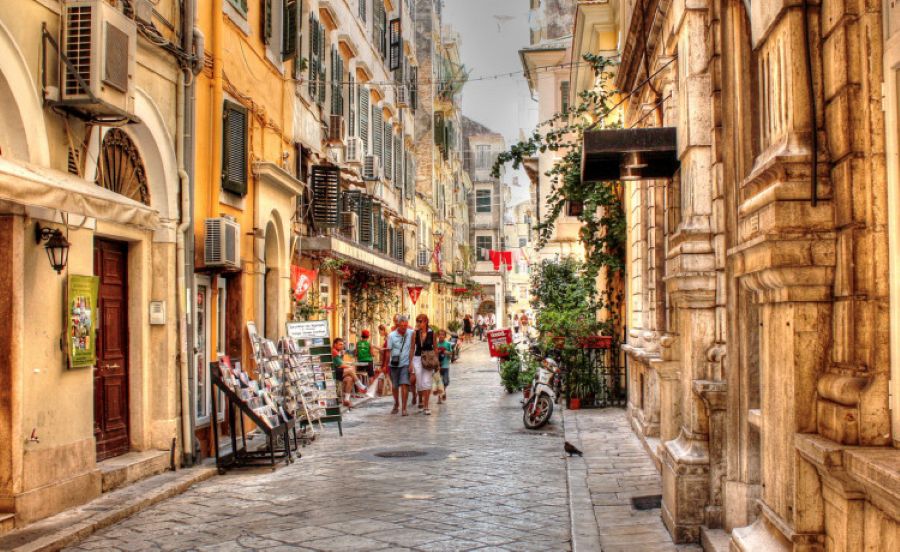
Corfu Town’s narrow streets are packed with small specialty shops selling jewelry, leather goods, and local treats. You’ll find the famous kumquat liqueur unique to Corfu in many stores.
The Zakynthos town market offers a more intimate shopping experience. Local vendors sell fresh produce, spices, and olive products in colorful displays.
Both islands feature evening markets during summer months. These pop-up bazaars are perfect spots to find unique gifts and local crafts.
Handcrafted Products

Corfu excels in ceramic crafts, with many artisan workshops creating beautiful pottery and decorative pieces. Local artists often showcase their work in small galleries around the old town.
Zakynthos is known for its handwoven textiles and traditional Greek clothing. Many shops sell flocati – traditional wool rugs made by local craftsmen.
Both islands offer handmade jewelry featuring designs inspired by ancient Greek patterns. Look for pieces made with local olive wood, a specialty of the Ionian Islands.
Pro tip: Visit shops early in the morning or late afternoon to avoid tourist crowds and get better prices.
Transportation within the Islands
Getting around Corfu and Zakynthos offers several convenient options for tourists, from renting vehicles to using public transport systems that connect major spots on both islands.
Rental Options and Public Transport

Both islands have reliable bus networks that link main towns to popular beaches and attractions. Corfu’s green buses run frequently between Corfu Town and coastal resorts, with tickets costing around €2-3 per journey.
Zakynthos operates a similar system, though with fewer routes than Corfu. The main bus terminal in Zakynthos Town serves as the hub for connections to places like Laganas and Tsilivi.
Car rental offices are easy to find in both destinations. A small car typically costs €30-40 per day in peak season. Most agencies cluster near airports and main towns. Remember to book ahead during summer months.
Scooter and Bicycle Use
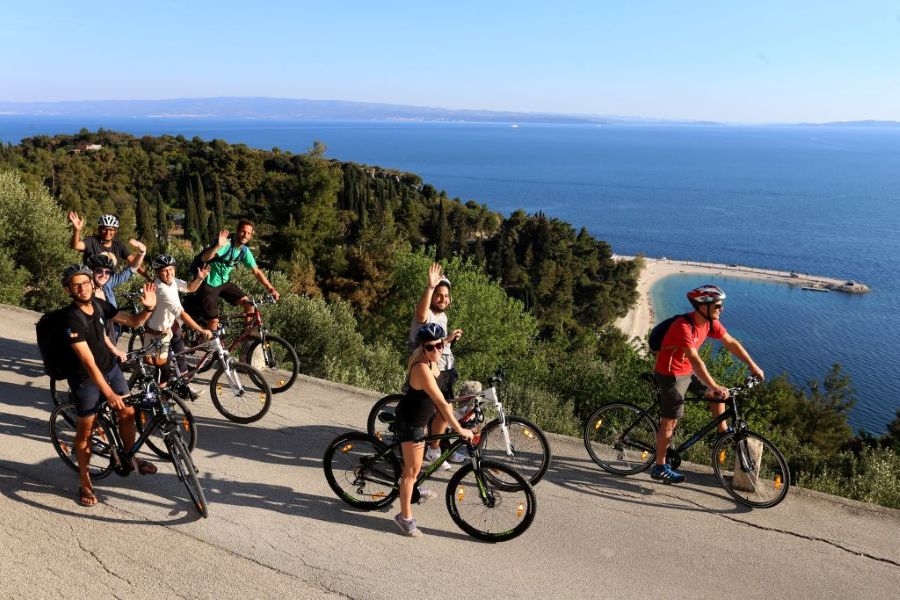
Scooters are a popular choice for exploring both islands. Daily rental rates start at €15-20, making them more budget-friendly than cars. Local rental shops require a valid driver’s license and often ask for a security deposit.
Cycling is more practical in Corfu due to its better road infrastructure. Several shops rent bicycles for €10-15 per day. The northern part of Corfu has scenic coastal routes perfect for cycling.
Zakynthos has limited dedicated bike paths, but quiet inland roads work well for cycling. The flatter southern region is easier to explore by bicycle than the hilly north.
Frequently Asked Questions
Travelers often want specific details about these two stunning Ionian islands before booking their trips. These common questions cover key aspects like attractions, nightlife, beaches, and costs.
What are the key differences in attractions between Corfu and Zakynthos for travelers?
Corfu shines with its UNESCO World Heritage old town, filled with Venetian architecture and winding cobblestone streets. The island’s rich history comes alive in spots like the Old Fortress and Achilleion Palace.
Zakynthos features the famous Shipwreck Beach and Blue Caves as its main draws. The island’s Marathonisi (Turtle Island) lets visitors spot protected loggerhead sea turtles in their natural habitat.
Which island offers a better experience for tourists seeking nightlife, Corfu or Zakynthos?
Zakynthos takes the crown for nightlife, especially in Laganas resort area. The strip buzzes with clubs, bars, and beach parties that keep going until sunrise.
Corfu offers a more relaxed evening scene. Think beachfront cocktail bars and traditional tavernas where guests can enjoy local wine while watching the sunset.
How do the beaches of Corfu compare to those of Zakynthos in terms of beauty and facilities?
Zakynthos boasts the iconic Navagio Beach (Shipwreck Cove) and crystal-clear waters perfect for swimming and snorkeling. Many beaches come equipped with sunbeds, umbrellas, and water sports facilities.
Corfu’s beaches range from golden sand to peaceful pebble coves. Popular spots like Paleokastritsa and Glyfada beach offer full amenities, while hidden gems like Rovinia stay pristine and untouched.
Can you highlight the unique cultural experiences that differentiate Corfu from Zakynthos?
Corfu’s strong Venetian influence shows in its architecture, cuisine, and local customs. The island celebrates unique Easter traditions and hosts classical music festivals throughout the year.
Zakynthos embraces its Greek identity through traditional festivities and local customs. The island is known for its serenatas – traditional musical performances that still take place in the streets.
What are the transportation options available when travelling from Corfu to Zakynthos?
Direct flights between the islands don’t exist. Travelers need to fly via Athens or take a combination of ferries and buses through mainland Greece.
The journey takes about 8-10 hours using public transport. Many visitors choose to visit one island per trip due to the travel time involved.
In terms of overall costs, how does vacationing in Corfu differ from Zakynthos?
Corfu tends to be slightly pricier, especially in and around Corfu Town. Accommodation and dining costs reflect the island’s more upscale reputation. Zakynthos offers more budget-friendly options, particularly in areas like Laganas. Package deals and all-inclusive resorts make it popular with value-seeking travelers.
